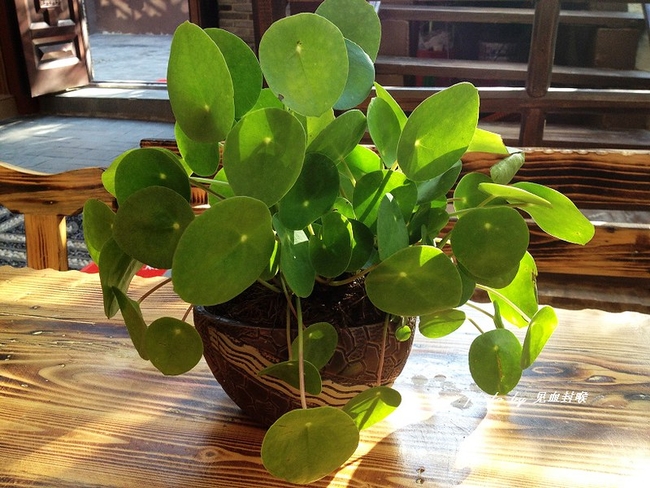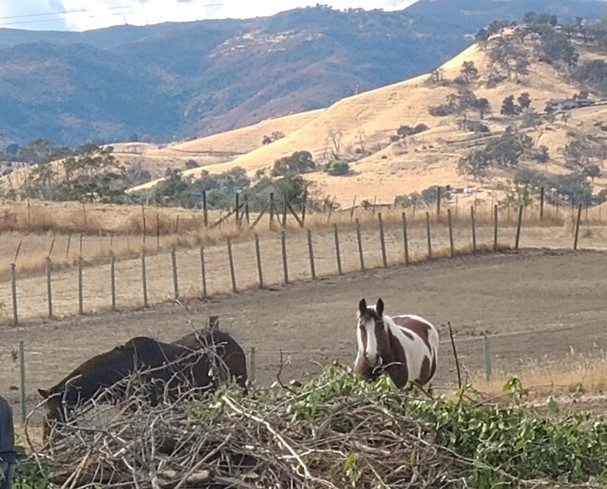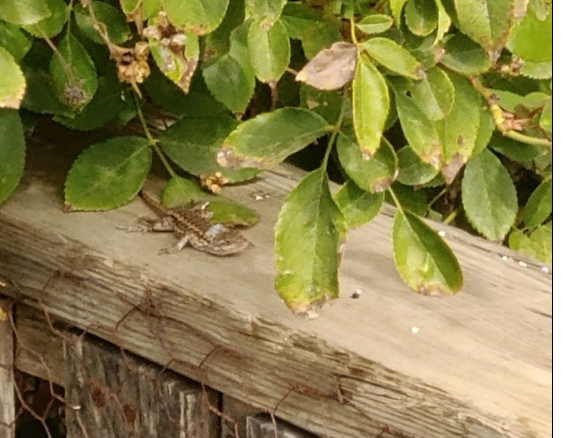UC Blogs
Fall Harvest-Nov 1
For many years, fall was my time for planting, cleaning up the garden, and all the other things I couldn't do in the summer when it was too hot to work. I thought that this year would be the same, but not so. For one, we had extended hot weather into the beginning of autumn, so we couldn't do anything then. By the time it got cooler, I'd found other things to do.
Because I have not been as busy in the garden, I have enjoyed the bounties from my garden. Last week, we picked a record 2.5 lbs. from our olive tree (Olea europea), half a pound more than last year. The tree doesn't get any irrigation in the summer, except for the rare buckets of water thrown in to keep the surrounding plants alive. It produced enough to give us a small bottle of olive oil from the community milling.
For the last few weeks, I've been slowly picking pomegranates as they show signs of cracking and giving them away to friends and neighbors walking by. I've been enjoying watching each fruit get bigger and redder. I've been very careful not to pick too soon as they don't get more ripe once they're picked. I did learn that the cracking is actually a sign of uneven moisture, especially towards harvest time. After it rained one night, some fruit have suddenly cracked open where I can see thearils, which could lead to bacterial infection unless picked soon. I'm going to be busy processing these with my gadget (shown in the picture), and I need to think about who else has not gotten a pomegranate.
MSU Soil Scientist to Discuss Nematodes as "Bioindicators of Soil Health and Climate Resiliency'
Nematodes, says soil scientist Christine Sprunger of Michigan State University, East Lansing, are "bioindicators of soil health and...

Soil scientist Christine Sprunger (left) and lab manager of the W. K. Kellogg Biological Station (KBS), Michigan State University, collecting soil samples. (Photo courtesy of KBS)
Pilea peperomioides-My Danish Discovery!
For the past two years I've made my Fall trip to Denmark to visit my new Danish Family! I always wanted to write about a plant that was resoundingly Danish and on this past trip I realized the houseplant I kept seeing over and over was Pilea peperomioides, commonly known as the Chinese Money plant or,UFO plant, Missionary plant and Pancake plant. The fact that it was named a “Chinese” plant threw me off to this plants origin story.
Although the plant was first collected by the Scottish botanist George Forrest both in 1906 and then again in 1910 it was found again by Norwegian missionary Agnar Espegren in Yunnan Province of southern China in both 1906 and again in 1910 as he was fleeing the Province. Espegren brought his cuttings back to Norway, by way of India in 1946. From there this plant spread throughout Scandinavia (Denmark, Sweden, Finland (after the Second World War), and Norway. Initially it was spread unknowingly by amateur gardeners via cuttings but by the late 20th century it became well known by Western botanists. Pilea peperomiodies is part of the nettle family, Urticaceae, of flowering plants. It became widely commercially available in the 2010's and 2020's.[1] It has become a symbol for prosperity and abundance because the Chinese believe it attracts wealth and financial success.[2]
The Chinese Money plant is an erect, evergreen perennial with green, glossy, circular coin-shaped (hence the name “Money plant”) leaves that can grow as large as 4” in diameter on long petioles that attach a little above the center of the leaf. The plant is hairless and can grow up to 12” tall and wide in the wild. Still, the indoor ones that I saw were even larger.[3] The picture to the right shows a mature plant with pups![4] The stem is unbranched and grows erect, ranging in color from greenish to dark brown. The white flowers are inconspicuous. The plant can tolerate temperatures that go as low as 68 degrees Fahrenheit upwards to 100 degrees F. Keep in mind that the plant thrives in warm, humid conditions. If those conditions don't exist in your environment, you can place pebbles in the saucer underneath your plant and fill it with water, making sure the bottom of the pot is not touching the water. The other way is to mist your plant daily.
One of the great qualities of this plant is that they are extremely easy to propagate. There are three effective ways to do this. The first is to propagate through offshoots from the main stem of the mother plant. With a disinfected blade (wipe with alcohol before doing this), cut a baby, (offshoot) from the stem. Put the stem in a bottle of water so the tip is submerged, and when the roots reach 1”-2” long, it is ready to be planted in your soil. It is so easy to propagate this plant it has been called the “pass it on plant.”
Another method to make it even easier is to harvest one of the “pups” or “babies” that grow. This plant has two kinds- offshoot babies and rhizome babies. The latter pops up in the soil near the mother plant. They are connected to the mother by an umbilical-like cord under the soil. Once you see this happening and the pup reaches 2-3” tall it can be removed and planted in a new container. Remember that the larger the plantlet is the better its chances of survival. The best time to do this is during the growing season, (the warmer months). Plant these plants in well-draining soils since they don't tolerate sitting in soggy soil. To encourage your plant to produce pups you can increase your plants access to nutrients by fertilizing it once a month during its growing season. Use a balanced fertilizer, 10-10-10 diluted to half strength once a month.
The last method is to actually cut the top off of your plant, root it in water and replant it.[5] Pilea peperomioides thrives in a soil mixture of three parts Peat mixed with three parts Coconut Coir and two parts Perlite.[6]
Finally, it is important to remove any dead or damaged leaves, which will increase light and ventilation to the plant, helping it to thrive. The Chinese Money plant is low-maintenance and tough, making it an excellent plant for those just beginning to grow a green thumb!
[1] Wikipedia- Pilea Peperomiodies
[2] Website thriveogarden.com May 2, 2024
[3] Wikipedia- Pilea peperomioides
[4] Image uploaded from wikimedia.com, upload.wikimedia.org
[5] Website- thehealthyhouseplant.com
[6] Website- www.wikihow.com
2025 UC Davis Biodiversity Museum Day Set Saturday, Feb. 8
Mark your calendar! The 14th annual UC Davis Biodiversity Museum Day is set for Saturday, Feb. 8, 2025. announced coordinator and...

UC Davis professor Jason Bond, director of the Bohart Museum, shows butterfly specimens to Woodland residents Olive Smith, 8, and her mother Sarah Smith. Bond is the Evert and Marion Schlinger Endowed Chair, UC Davis Department of Entomology and Nematology, and associate dean, UC Davis College of Agricultural and Environmental Sciences. (Photo by Kathy Keatley Garvey)

The nematology display, headed by associate professor Shahid Siddique, was a popular attraction at the 13th annual Biodiversity Museum Day, held Feb. 20, 2024. From left are doctoral student Nick Latina and doctoral candidates Pallavi Shakya an Alison Blundell. (Photo by Kathy Keatley Garvey)
Rain
The weather has cooled, thankfully. Seasons are now changing. The local birds have moved on, and sweet, flitting finches are visiting. The horse's and dog's coats are getting thicker. Yes, the winterizing has begun. Most of the garden beds are cleared, and a layer of compost is added for the winter rains to help the nutrients percolate into the soil. Trees are trimmed up, and branches are carted to the burn pile on the far end of the property. The horse's favorite snack is the green leaves off the branches when they are out in the yard.
I have heard the geese and their faint honking for a few weeks now as they are flying south. They're flying well over a thousand feet high, and surely there must have been hundreds flying in that telltale “V” pattern. The local geese have also been restless and fly daily from one pond/lake to another. I've noticed that they also signify the coming change in the weather. A welcome change it will be!
With temperatures cooling and the rains imminent, it's a perfect time to put in new trees and other landscaping plants. We had to remove some largeEuphorbias by the pool for repairs. We will be getting those planted in the next few days as well. The most difficult thing is to dig holes in the concrete-like ground! The compost bins are billowing with all the new leaves falling. This lizard was waiting for me to leave so that he could grab some of the bugs in the compost. I think the cats were watching and waiting to grab him!
I went to the back garden and picked some vegetables for dinner. I can't believe we are a few days from November and this is still happily growing. But pretty soon, I will be hearing the sound of the rain on the barn roof—such a nice sound, too!
Enjoy the season, everyone.

tomatoes and veg







